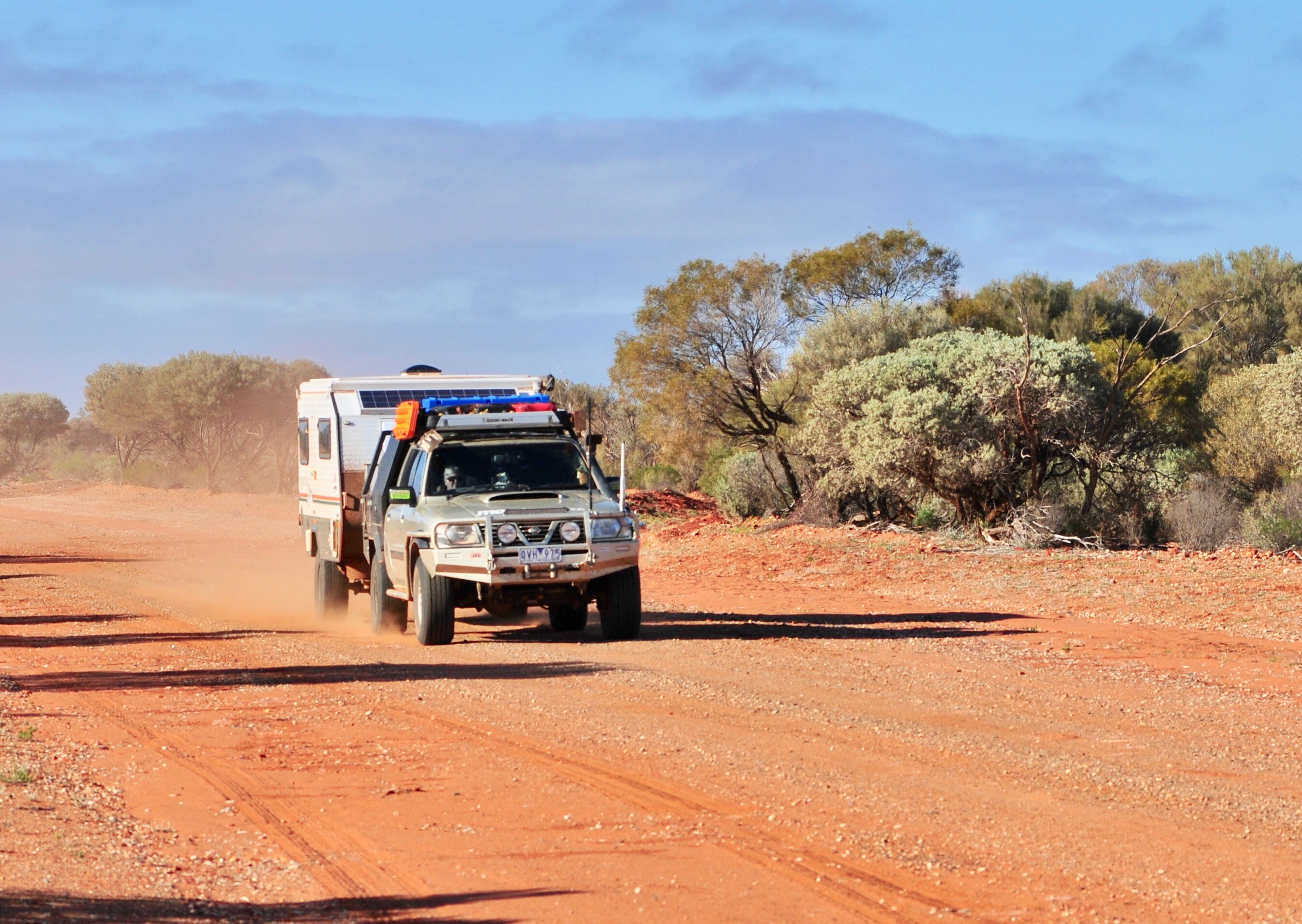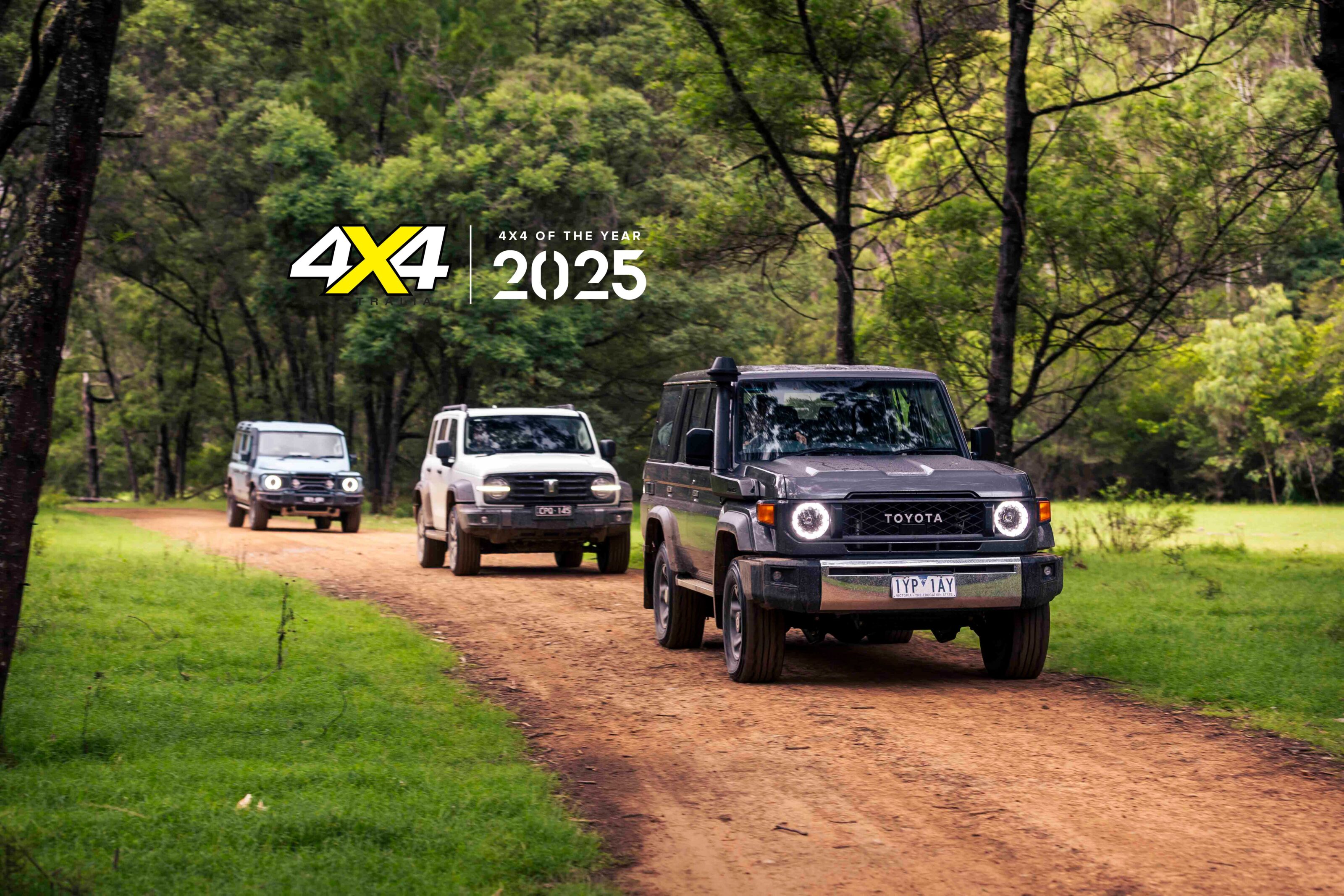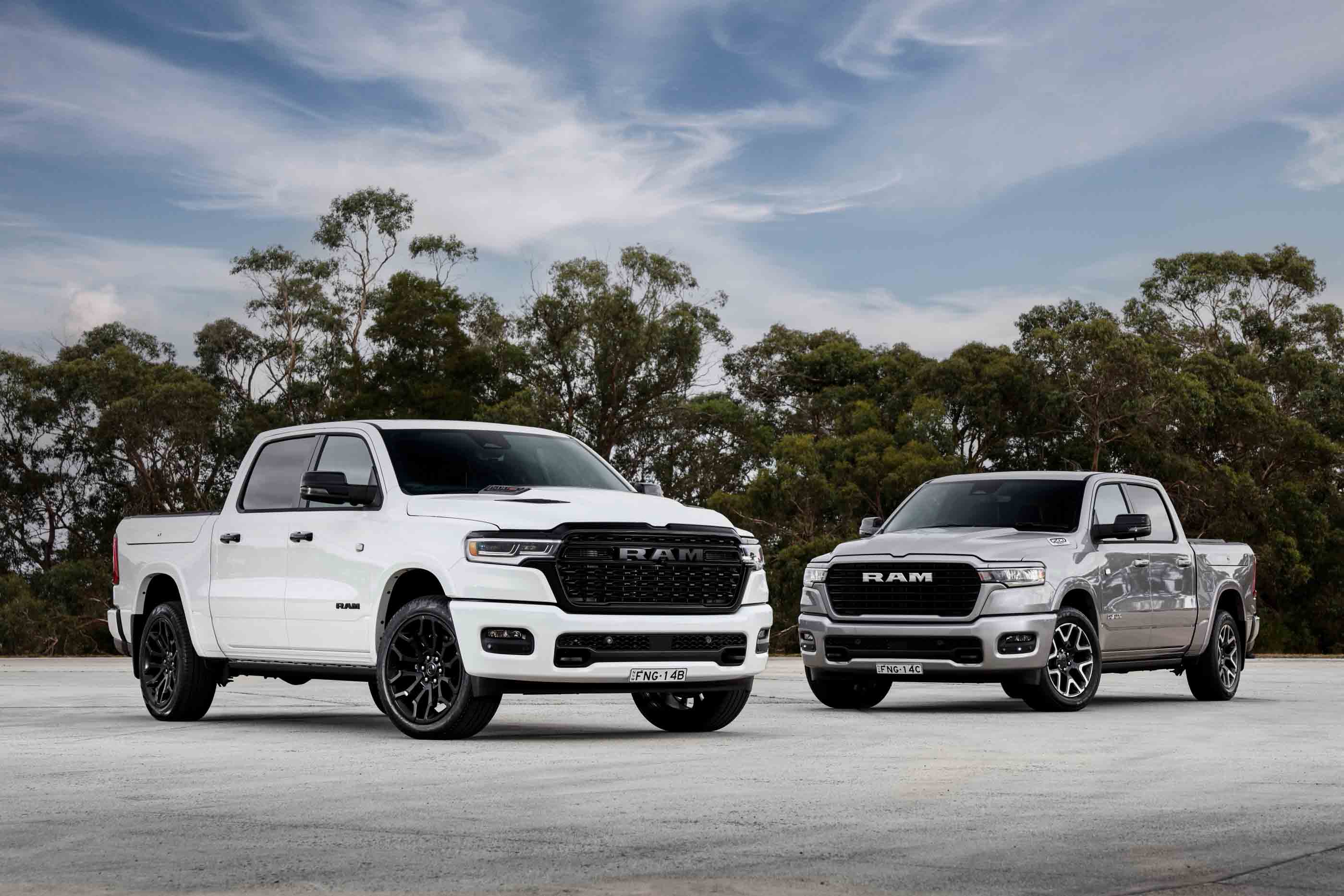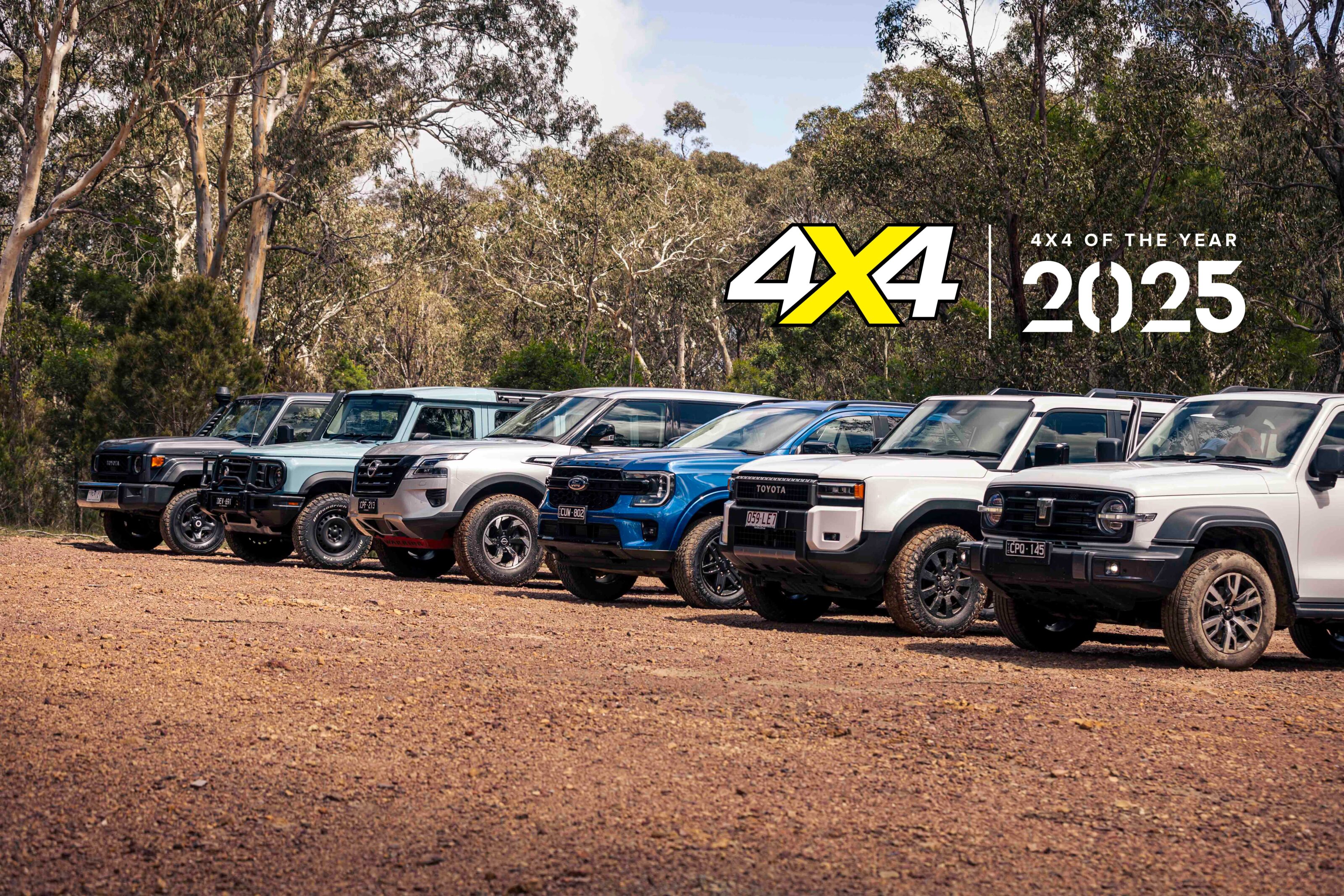- Update 1: Accidental upgrade
- Update 2: Box fresh
- Update 3: Under pressure
- Update 4: Tough lovin’
- Update 5: Shock therapy
- Update 6: Patrol gets tougher
- Update 7: Dirty tricks
Update 1: Accidental upgrade
Ron’s trusty old steed loses a rear leg in the Vic High Country, prompting a thorough replacement of worn parts.
The old Patrol let me down recently, both literally and figuratively. We were coming home from an enjoyable weekend up in the Vic High Country and had just got onto the Crooked River Road, when with hardly any warning the rear wheel on the Patrol parted company with the rest of the vehicle. Talk about being dumped.
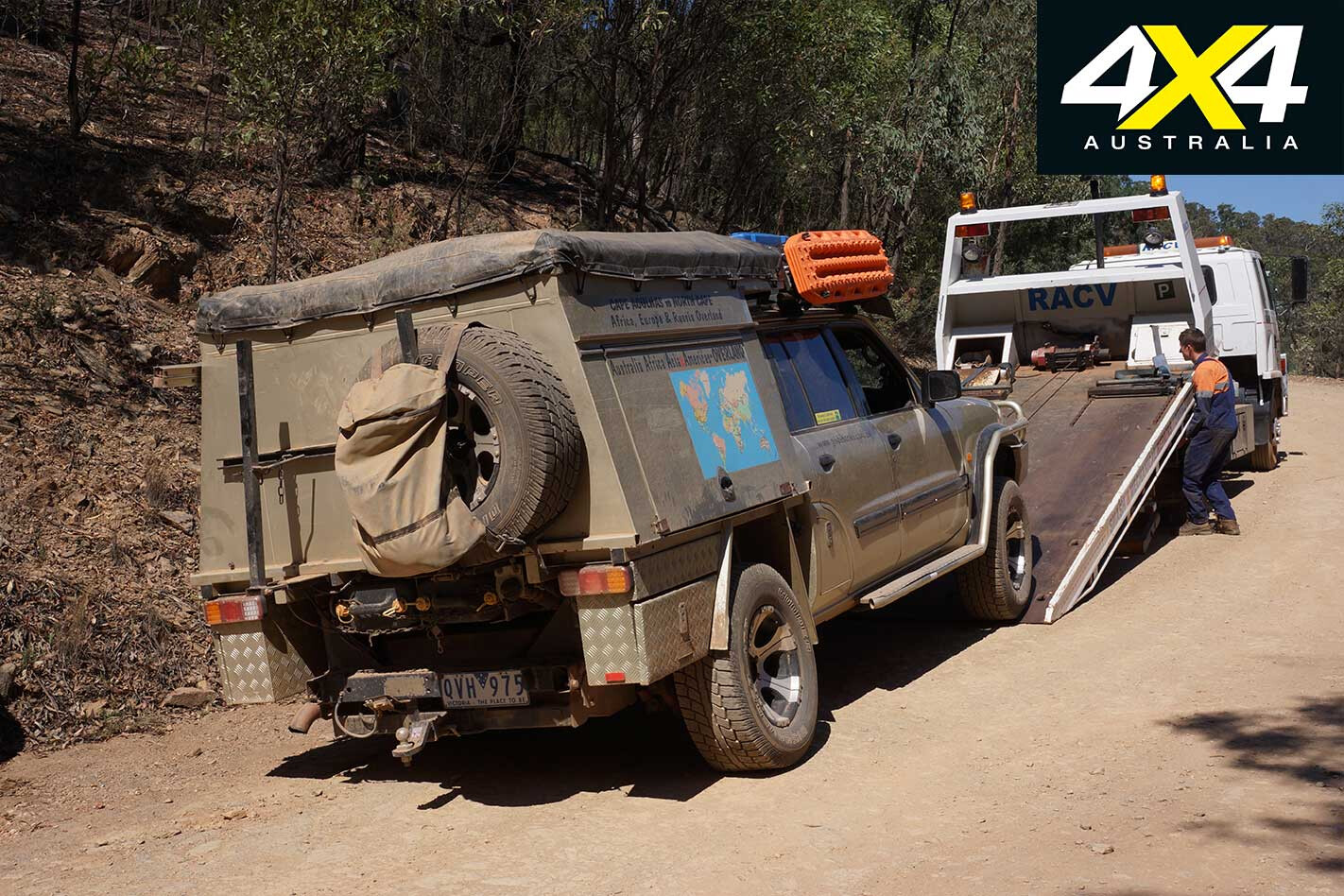
I could have repaired it myself as I had spare wheel studs onboard, but being inherently lazy and so close to civilisation I opted for a recovery and a repair job, and the boys at ARB Bairnsdale helped us out at a moment’s notice.
Then it was back to Outback 4WD in Bayswater, where they replaced all the studs on all the wheels. By all accounts studs can stretch after years of hard work and changing rims and, sooner or later, they break; and if you don’t do the wheel nuts up correctly, wheels can part company. Patrols, it seems, are more liable to do that than some other vehicles; I guess I was lucky I was on a major dirt road and not halfway up Billy Goat Bluff.
It’s been a while since the old girl has been in the mag, and we’ve done a bit of preventative maintenance over the past few months, not the least of which was a new rear diff housing. I had cracked the original back at about the 200K mark, and I had it welded more than once between then and the 400K the Patrol has now done. With another welding job required, I decided it was best to replace it.
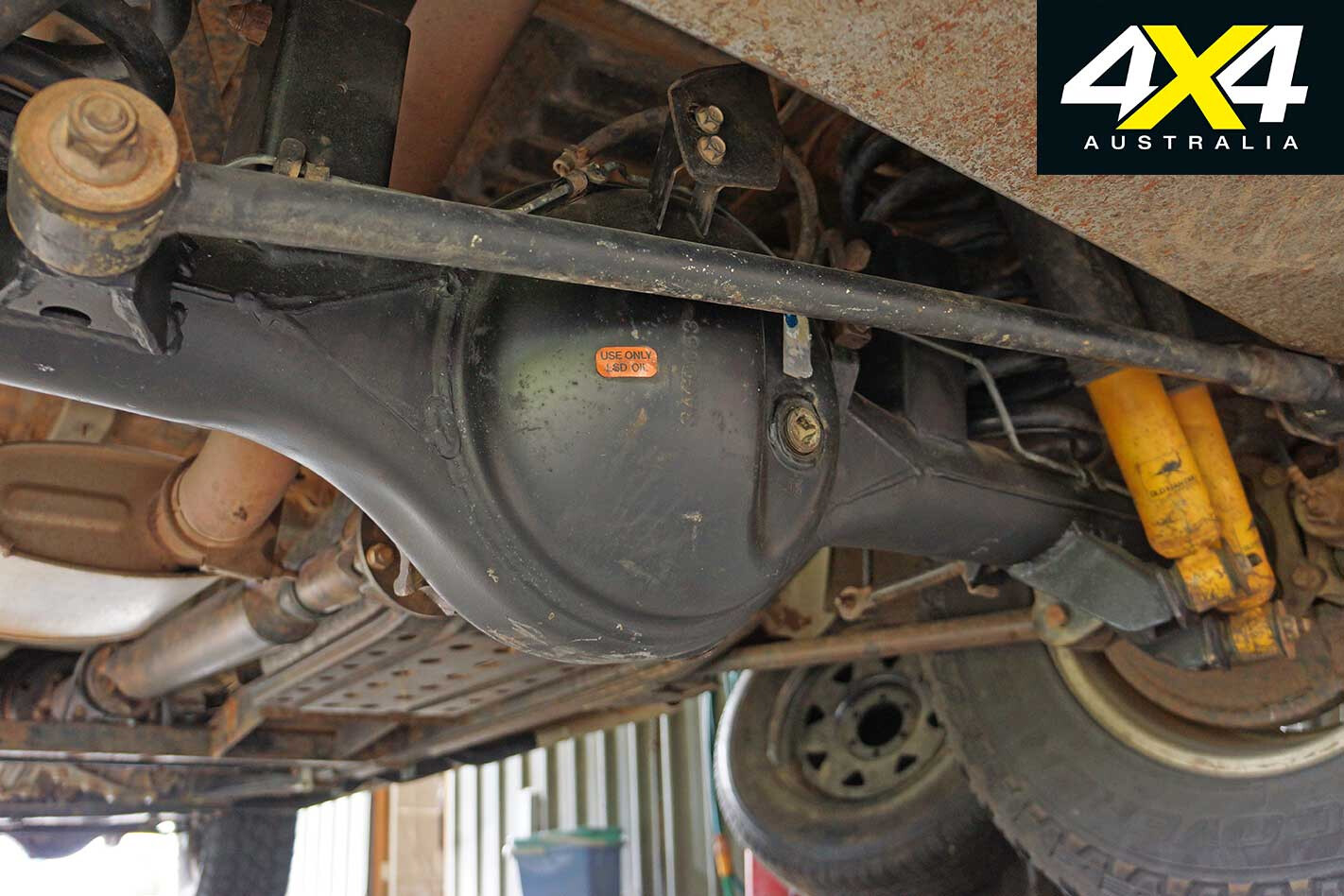
Around the same time I had Outback 4WD replace all the rubbers and bushes on trailing arms and the like, as well as fit braided brake lines to all the brakes. To help with the cooling of the radiator we fitted a GQ fan and drive hub; the fans shift more air than a standard GU fan but make more noise in the process.
I replaced the light bar that had been sitting on top of my ARB bullbar with a more discreet Lightforce single-row light bar fitted with combo spot and flood LEDs. It might be smaller and draw less power, but the light output is amazing. Wanting to improve the standard headlights, I opted for a replacement Narva Ultima LED globes which are a direct replacement for halogen globes.
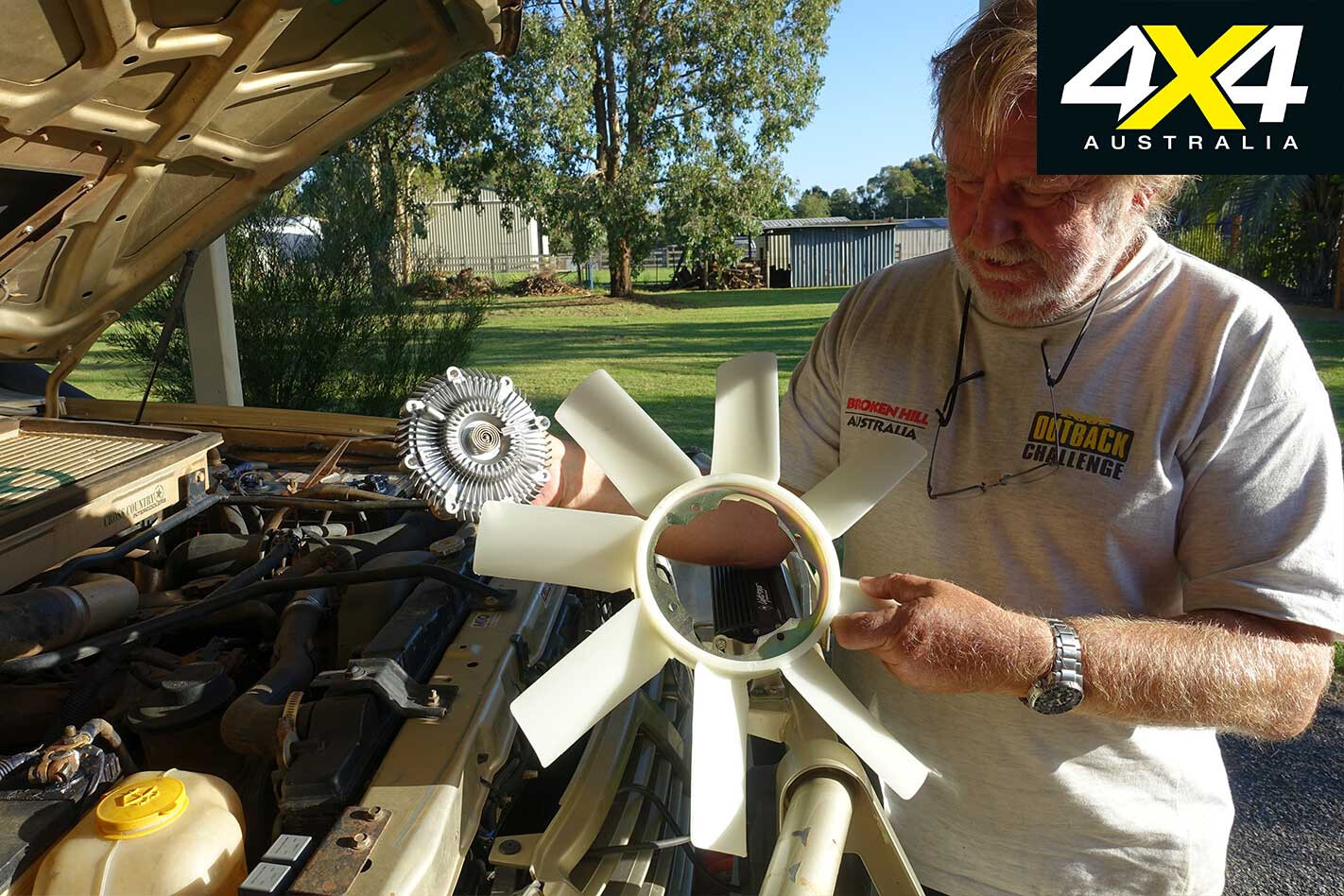
As many of you would know you can easily opt for a high-performance halogen globe and, while they throw a better light, you sacrifice longevity. With the new LED light you get a bright white light coupled to a stated life of 30,000 hours. I’d be more than happy with a third of that.
Now with better lights, new studs so the wheels don’t come off, and with a full service and oil change, the Patrol is ready to hit the road and the bush tracks once more.
DATE ACQUIRED: 2001 PRICE: $44,000 TOTAL KILOMETRES: 393,000km AVERAGE FUEL USE: 17L/100km
Update 2: Box fresh
Ron’s Patrol cops a well-earned service, with a rebuilt gearbox and new transfer box among the changes.

Over the past few months the 2001 Nissan Patrol has been having a holiday on the south coast of NSW and up in the high country of Victoria.
On these trips the gearbox occasionally growled at me and, as we clocked up more kilometres, it became more regular. With 400,000km on the clock I guess I shouldn’t complain, so before it expired on me completely and left me stranded somewhere in the scrub I thought I’d better do something about it.
Off we went to Outback 4WD in Bayswater (Vic) and they soon had the gearbox out and sent off for a rebuild. It turned out that all the bearings were showing signs of wear, while the gears themselves were pretty good; so a few grand later we had the ’box back at the workshop and ready to go back in.
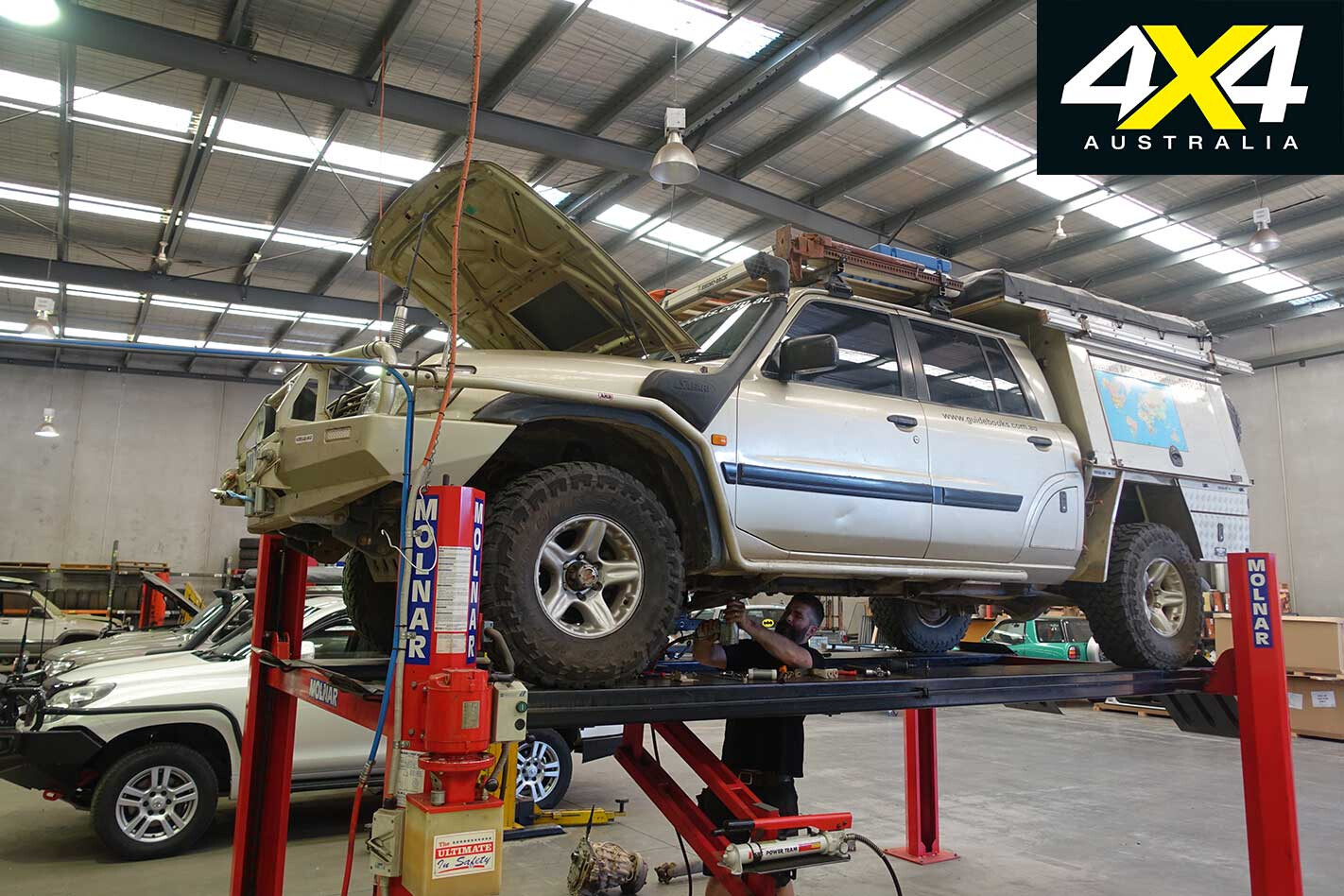
While the ’box was out we also machined the flywheel and fitted a new clutch. Again I went for a Safari Tuff clutch from Exedy, as the previous Safari unit had performed faultlessly over the last 250,000km or so in all sorts of terrain and towing different sized vans and campers. The clutch was still okay and wasn’t causing any problems – and it probably would have lasted another 20-30,000km – but it made sense to drop in a new one while the ’box was out.
Previously, I had learned my lesson with two OE clutches failing in the first 150,000km, so I knew they weren’t the units I wanted. Exedy claim the Safari clutch offers 25 per cent more clamping pressure without any noticeable effort on your part, and I’ve certainly found that. I had also been warned on both occasions that the clutch can rattle and be a bit noisy, but, again, I haven’t noticed that… maybe it’s because I’m deaf in one ear.
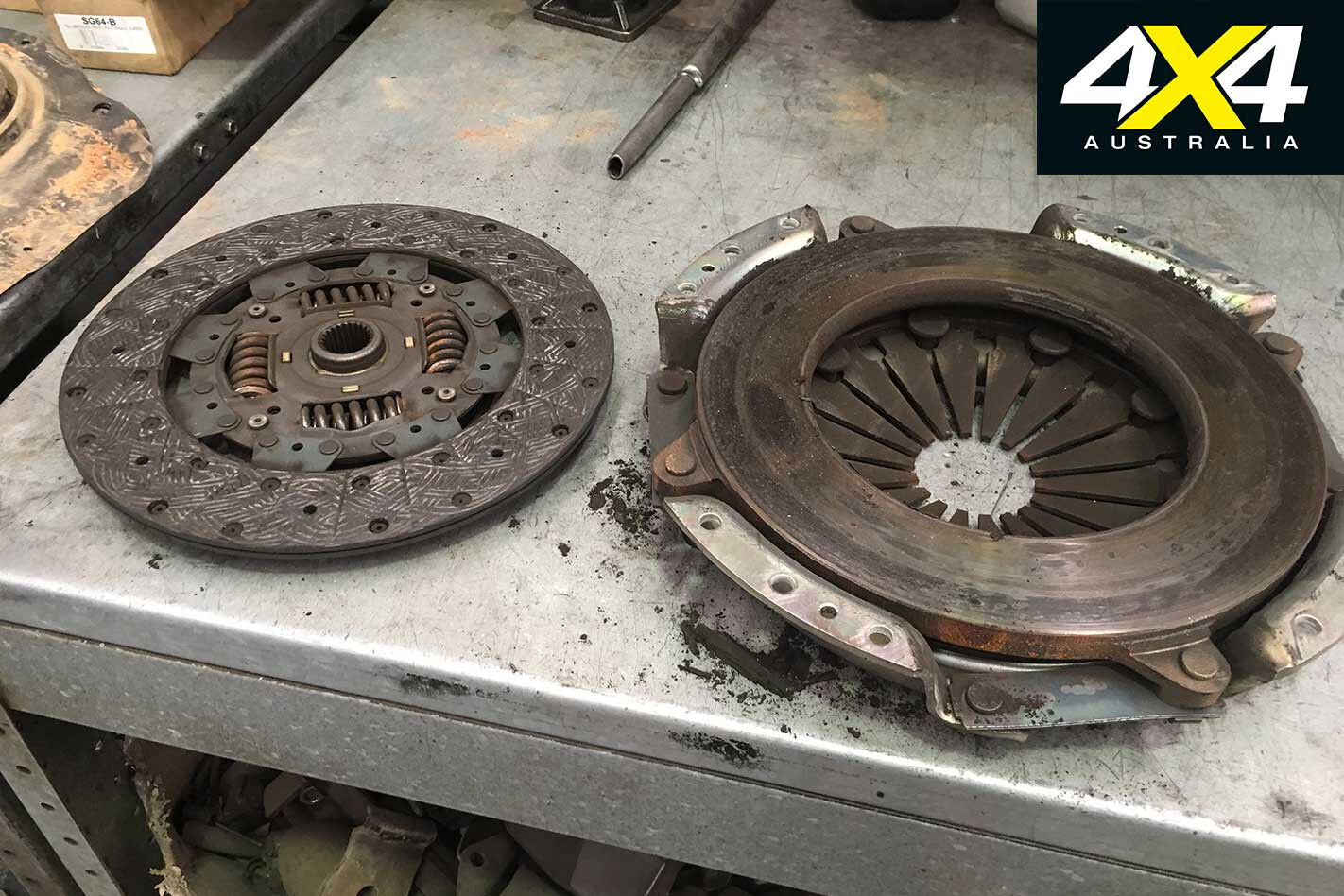
The transfer box with the Marks 4WD Adaptors low-range gearing in it was also overhauled with new bearings; although, again, it wasn’t really necessary. I’ve found the extra-low range gearing the Marks 4WD Adaptors mod has given me is handy when I’m towing in the really rough stuff, as the extra torque available and the low speed you can enter an obstacle with is not only handy, but there is less chance of doing damage to panels and vital underneath components.
As well as the gearbox and transfer box the crew at Outback overhauled the front axle CV joints, swivel hub seals and bearings. With the exhaust showing signs of wear and tear and a few broken brackets, we patched it up for another round or two in the scrub.
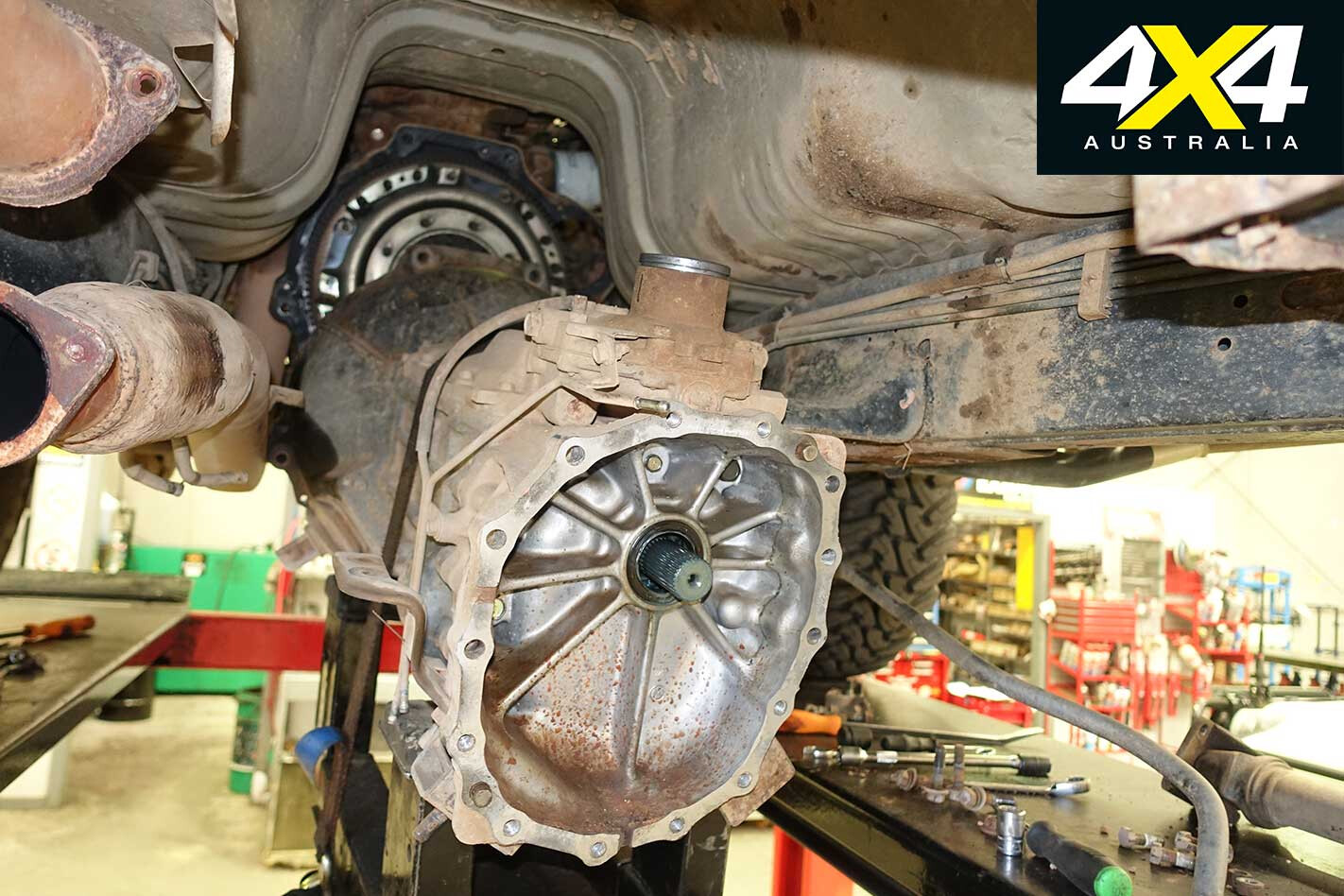
However, it won’t be long before we’ll have to source a replacement unit and, at this stage, I have no idea which one to go for. As I intend to keep the old girl for a few more years, perhaps a stainless steel unit is the way to go. If anyone has a recommendation, let us know.
Finally, with a service the old Patrol rolled out of the workshop ready to hit the road once more, the first trip being a quick run up to the scrub beyond Broken Hill at Easter.
We might see you on the road.
TOTAL KILOMETRES: 413,000km KILOMETRES SINCE LAST UPDATE: 20,000km AVERAGE FUEL USE: 16L-17L/100km
Update 3: Under pressure
It’s far from plain-sailing for Ron’s Patrol over the past few months.
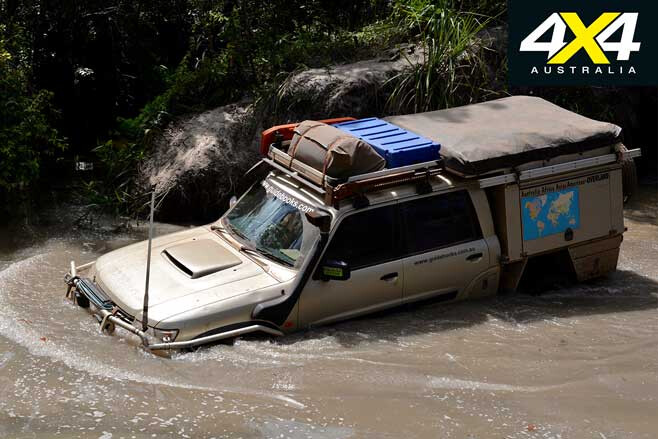
We’ve had a few hard months in the ol’ Patrol. First we headed for Central Australia and explored the East MacDonnell Ranges, before wandering along the Plenty Highway and then down the Hay River Track into the Simpson and on to Birdsville.
With hardly time to catch my breath, or for the Patrol to have a rest, we turned around and followed my son and his Moon Tours trip across the Madigan Line back to Alice Springs. Without any further ado we then headed to Cairns and up to Cape York, running all the hard tracks including Frenchman’s, the OTL and the Old Coach Road to Maytown.
Before setting out we fitted a new set of Cooper AT3 XLT tyres, but the tyre-fitting place replaced some of the wheel nuts with the wrong ones, which kinda buggered the threads on the studs. Luckily the crew at Outback 4WD picked up on the fault while the rig was being serviced and undertaking a pre-trip inspection, otherwise I’m sure I would have lost a wheel or more.
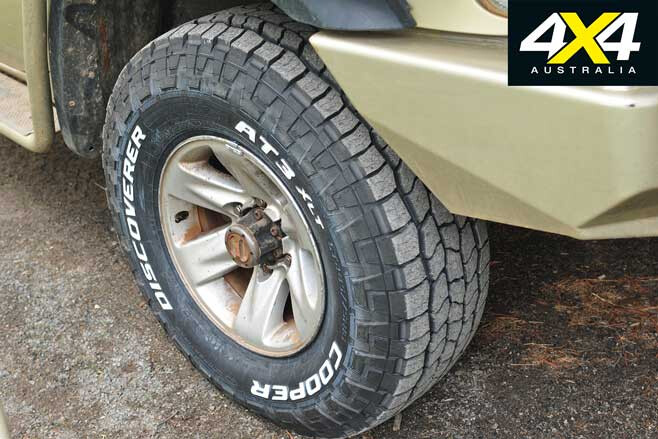
Anyway, the AT3s are performing beautifully and we’ve punished them in all sorts of terrain over the last 12,000km or so, from desert sand to Cape York mud to rocky trails. They are quiet, responsive and steer well on both blacktop and dirt, while the fuel economy has improved over the more aggressive ST Maxx tyres we had been running for some time. Well, you’d hope that’s the case when you go to a less aggressive tyre.
However, we’ve had our fair share of issues while on the road. In the Eastern Macs I had a ‘knock’ coming from the front wheel which turned out to be a castor bush flogging out. A quick phone call to the ARB Alice Springs crew and a trip into town and we were soon on our merry way.
North of the Plenty Highway, where we went wandering and exploring, the Patrol developed a coolant leak from the bottom hose on the radiator. It turned out to be just a faulty hose clamp but it again highlighted the importance of regularly checking the vehicle when on an outback trip.
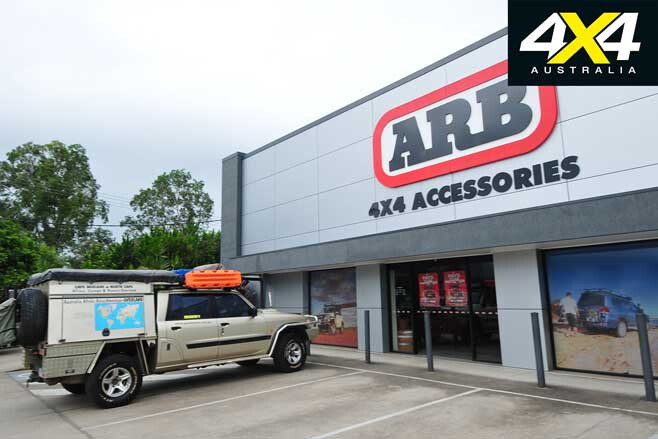
Then, while wandering over the floodplain of the Diamantina south of Birdsville, I noticed a couple of missing bolts on one of my free-wheeling hubs, with the hub very loose. That seems to have left the hub damaged and noisy at times, but it got us home.
The next thing, during the course of the two crossings of the Simpson Desert, I noticed the front-end was bouncing more than normal. With no time, we waited until we got to Cairns and had the rig serviced by Wayne Boylett Mechanical (wayneboylett.com.au), where he picked up on the two (!) busted front springs. No wonder we were bouncing. Another rushed call, this time to ARB Cairns, for a couple of OME springs and we were soon on our way.
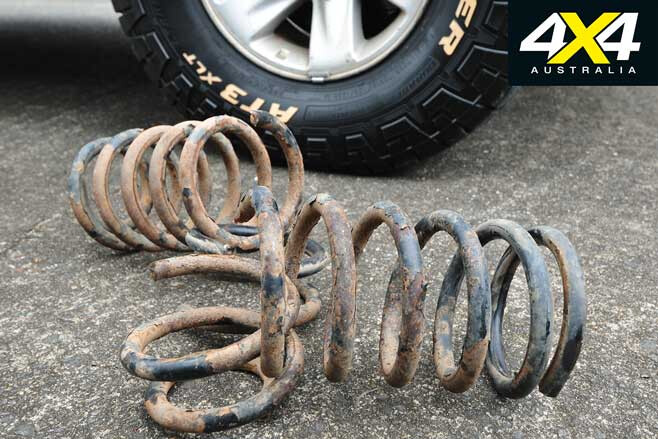
The Cape York trip was pretty uneventful for the Patrol; although, a few other vehicles in our group had issues which kept us on our toes and working into the night to keep them going, but that is another story. Suffice to say, the Patrol is now back at Outback 4WD (outback4wd.com.au) in Bayswater, getting a good going over and a major revamp.
TOTAL KILOMETRES: 428,000km KILOMETRES SINCE LAST UPDATE: 15,000km AVERAGE FUEL USE: 15L-16L/100km
Update 4: Tough lovin’
Ronnie’s Patrol gets new CVs, shocks and free-wheeling hubs… well, when they finally arrive.
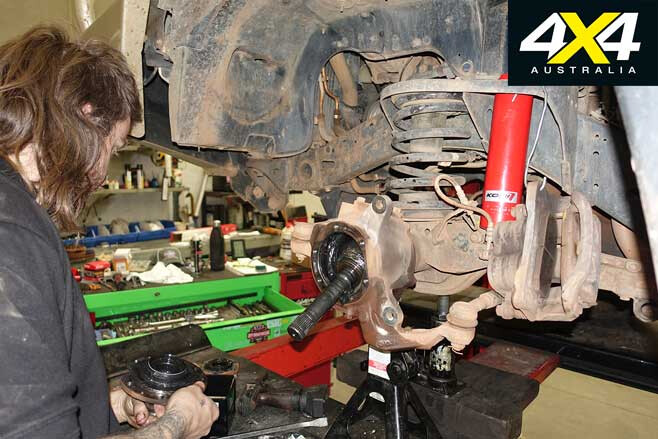
The ol’ Patrol was in more dire straits than we originally thought.
I knew something was wrong as we clambered out of a canyon that had formed at the Palm Creek crossing up on Cape York. The ol’ girl got hung-up at the top of the bank and it was noted then that, even with front locker engaged, there was no drive going to one of the wheels; a bad sign.
We mucked around with the hub and got some semblance of drive out of it, and we continued on the OTL track and then the Laura-Mayfield road without any further issues, barring the occasional growl from the front end. Still, she got us home with barely a whimper … well, maybe a snarl or an occasional clatter from the front end, but that was all.
When looking for the growl back at Outback 4WD, it became obvious it was more than a noisy free-wheeling hub.
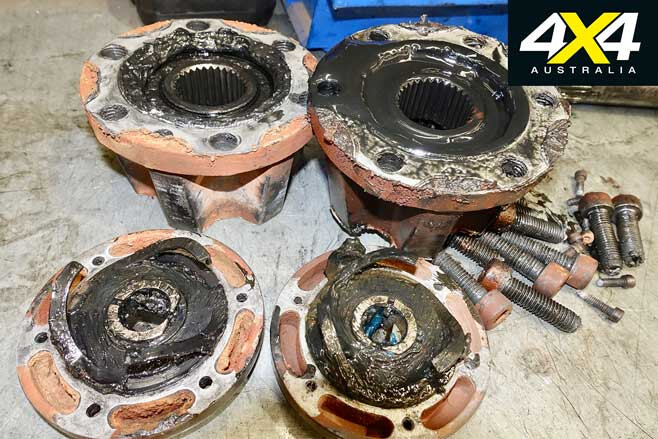
It was then I learnt from the experienced gurus at Outback 4WD that while there are good free-wheeling hubs, there are better ones. After a bit of deliberation I ordered a set of genuine Nissan manual free-wheeling hubs (no auto-lock facility) as found on the Nissan GU cab-chassis. They’re not particularly cheap, and as we go to press we’re still waiting for them to come in – maybe they are on back-order from Japan!
In the meantime we had a good look at the axles and CV joints. While neither of the CVs featured broken teeth, busted cages or worn balls, one of the CVs was decidedly stiff in its articulation, so we thought we’d change both. The axles again had nothing really wrong with them but were showing the strain of more than 430,000km of travel, so we changed both. Again we opted for a set of genuine axles and nothing super-duper or costing a grand or more. The diff itself was still in fine form, so we let that be.
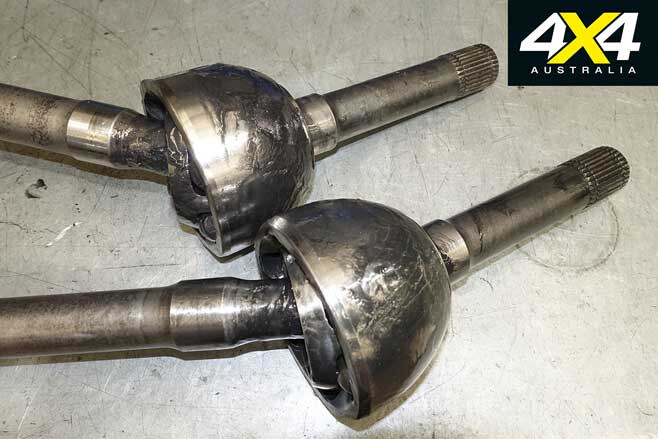
While we were giving the Patrol a good going-over, I also decided to change the shocks. I’ve had OME Sport shocks on for a number of years now and, while I’ve been more than happy with them, I thought I’d fit a set of Koni 90 Series Raid shocks to each corner.
It’s been a long time since I’ve had Konis on my 4WD (the last was on my 75 Series Troopy more than 25 years ago) and as yet I haven’t even driven out of the driveway with the new shocks, so I’ll wait until I’ve used them on a rough track or two before I let you know more about them. Suffice to say, they are more expensive than many other brands on the market; but going on my previous experience, if you want a good shock that will go the distance and you don’t want to go to a remote canister set-up, then the Konis are worth looking at.
Check them out at: www.toperformance.com.au
TOTAL KILOMETRES: 428,000km KILOMETRES SINCE LAST UPDATE: 0km AVERAGE FUEL USE: 15L-16L/100km
Update 5: Shock therapy
New shocks for an old warrior.
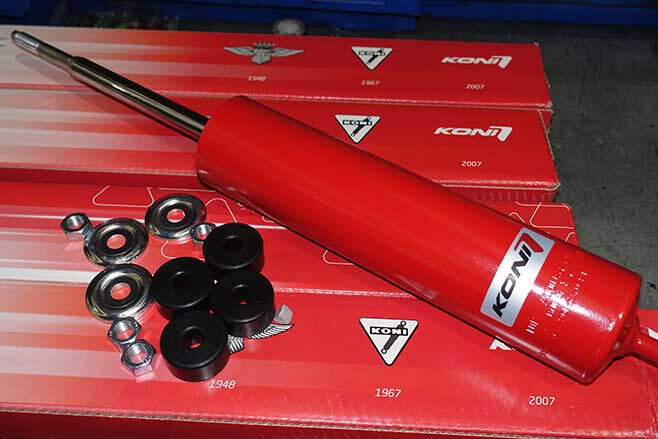
I have always been a fan of KONI shocks on a 4WD vehicle, ever since I had them on my old 47 Series Cruiser and then again on my younger (but old now) 75 Series Troopy.
Last year in the desert I met up with a mate of mine who once owned a major 4WD service centre, and he had just swapped to a set of KONI 88 Raid shocks on his Patrol ute. Knowing more than the average Joe about suspension and shocks I took his positive words and accolades to heart. Then with the recent on-going maintenance on the Patrol’s suspension I decided I’d bite the bullet and fit a set of KONI 90 Raid shocks to the battle-hardened Patrol.
For the money, or for not much more, you may ask why I didn’t go for a set of remote canister shocks, but I’m not a great lover of them. They seem to me, at least, to be just another item that hangs underneath a vehicle that will get damaged – or have a hose ripped off – when in the rough stuff or going cross country. And I have had remote canister shocks in the past, so I’m not coming from a completely unfamiliar or unknown point of view.
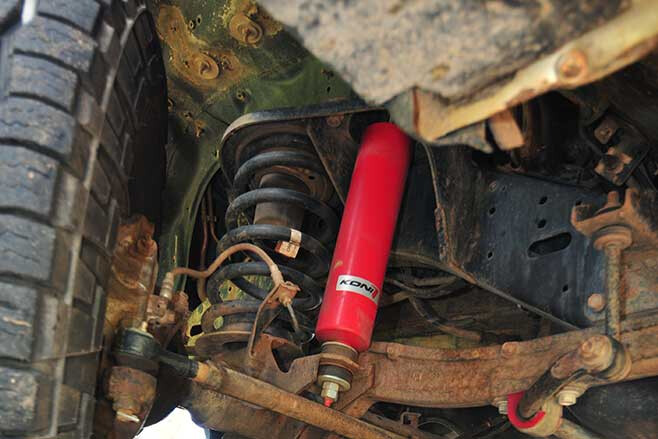
The 90 Series Raid shocks from KONI are based on the damper used in its military and truck and bus applications, and they’re made from highly refined and quality materials in its dedicated factory in the Netherlands. Each shock is valved and refined for the vehicle they are sold for, but if you’ve changed springs or had a GVM upgrade, etc., then these shocks are adjustable as well… more on that later.
These KONI shocks are of a twin-tube hydraulic design with an outer tube thickness of 2.5mm, meaning the inner reservoir tube and working area of the shock is well protected from the impact of rocks and other debris that is often flung around beneath a 4WD vehicle.
The body diameter is a big 70mm and that means more space for more oilfor much better cooling, higher efficiency and much less chance of shocker fade occurring. For added strength and reliability there is a 42mm diameter piston and an 18mm hard-chromed rod doing all the hard work; while high quality seals and solid robust fitting attachments, welded all around, add to the overall reliability score.
In addition to the adjustable rebound, these shocks feature an internal bump stop which adds extra security in case of savage compression impact.
There are a couple of other attractions that make the KONI a shock of choice for many outback travellers. One, they can be rebuilt if and whenever required; although, I’ve never had to resort to that in the past.
The big thing with these shocks is you can adjust the rebound force in order to adapt the shocks to your springs and the loads you carry. This takes just a bit of fiddling – temporary removal of the rubber bump stop – and if you can make sense of the guide that is supplied with each shock, you are doing well; better to head to YouTube for a short video on how to do the adjustment. It’s easy once you know how!
The crew at Outback 4WD set all the shocks before fitting them to the Patrol. Out of the box the shocks come with the valving set as low as they go to give, for many, a pretty soft and suitable ride. We cranked ours up to Stage 2 (two clicks clockwise, each click requires a turn through 180°) all around. Don’t forget to put the rubber stopper back in place!

Then the crew fit the shocks to the Patrol. Once again it’s all pretty easy, but do not tighten the mounting nuts and squash the shock mounting rubbers too much; take note of the supplied diagram.
So, what were the results and how did he Patrol drive, on- and off-road? Our recent trip to Tassie answered many of the questions. On winding mountain roads, the shocks allowed the vehicle to handle well, being comfortable through speed humps, potholes and the like, while keeping body roll to a pleasant minimum. Still, I’ve got a bit of adjustment to do, so I’ll make them ride a bit firmer to see if I prefer that.
In the rougher stuff the suspension articulated really well – much more than when I had the dual shocks fitted to the rear (more from the way they were mounted than anything else). Now the Patrol can really stretch its legs while keeping sudden jolts to a minimum.
We never had any long sections of corrugations to test the shocks over while In Tassie, but from past experience on the Gunbarrel and other long-distance, corrugated desert roads, these shocks never got hot to the touch and never experienced any shocker fade.
As far as price goes we’ve listed the RRP, but you may get them a little cheaper if you shop around. Finally, the shocks come with an unlimited kilometre, three-year warranty, which is bloody good. So, my final thoughts?
Well, I would not have gone to these shocks if I wasn’t sure of what I was getting. I’m super pleased with them and I’m looking forward to many kilometres of dependable and pleasant travelling.
WHERE: www.toperformance.com.au RRP: Front (pair) – $1194; Rear (pair) – $1236 WE SAY: Great shock. Reliable and durable, with excellent ride characteristics.
Update 6: Patrol gets tougher
A bent rear axle housing gets straightened.
After our workout and heavy recovery job down on the west coast of Tassie, I had the Patrol back at Outback 4WD for a going over and a good service.
We had done a lot of work on the ol’ girl before we went down to our Island State, which included a new three-inch mandrel-bent exhaust system; a new steering damper; new panhard, sway-bar and lower radius arm bushes; along with a new steering arm rod.
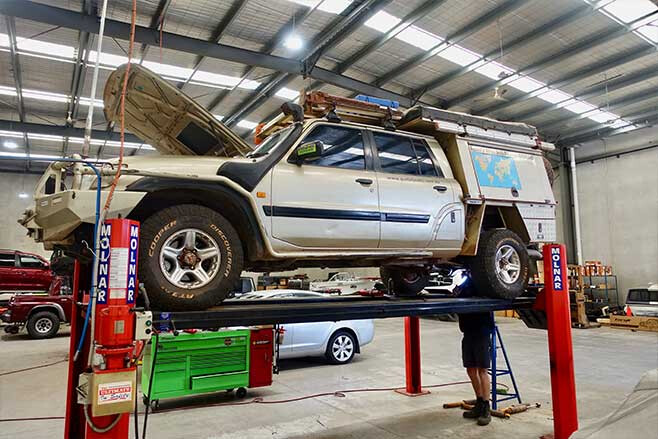
We also adjusted the engine valve clearance as well as a few minor jobs to keep the Patrol reliable and performing well. While we were down in Tassie we also staked a tyre on one of the tracks and the spare was an oldy, so once back home I took the opportunity to fit a couple of new Cooper AT3 XLT tyres.
I’ve got Cooper S/T Maxx tyres on the Cruiser and on my Ram 2500, but after having driven on the AT3s for some time now I really liked the handling and quietness of these tyres and their off-road ability in all conditions. Sure, they don’t have the mud-flinging ability of a genuine mud tyre, but they are a bloody good all-round compromise.
We also adjusted the new Konis we had fitted before Tassie, to make them a bit firmer, but I’ve got to say I’m very happy with their performance and the ride they offer under all conditions.
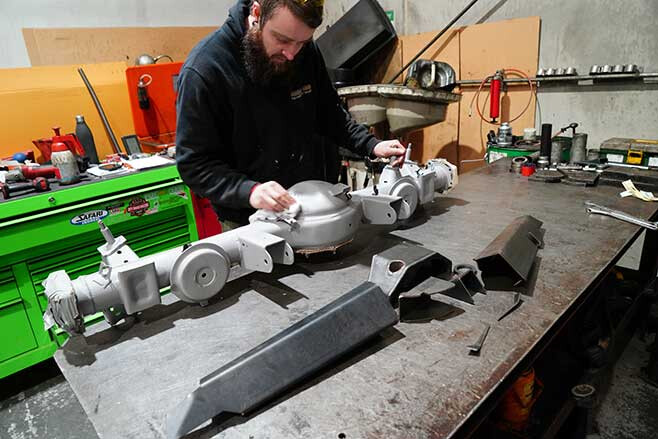
But the biggest job was one I’ve been wanting to do for a while now and the recovery and tow job we performed on a very heavy 6WD vehicle highlighted the bent rear axle housing. I’m not sure when that started but it got to the stage where we had to do something.
First up we rolled the rear suspension out from underneath the Patrol and then went and found a replacement axle housing, making sure it was perfectly straight. Then we went looking for a strengthening kit for said housing.
Superior Engineering in southern Queensland offer a wide range of accessories and equipment to upgrade suspensions and drivelines, so we opted for one of its axle kits. It wasn’t particularly cheap but it is well-designed and made, and it fitted the housing perfectly.
The brackets and supporting infrastructure were all welded into place by the crew at Outback 4WD, and during this process you have to ensure the axle housing doesn’t get too hot and deforms, even slightly. Then the internals were refitted and the axle rolled back under the Patrol, everything reconnected and the diff filled with oil.
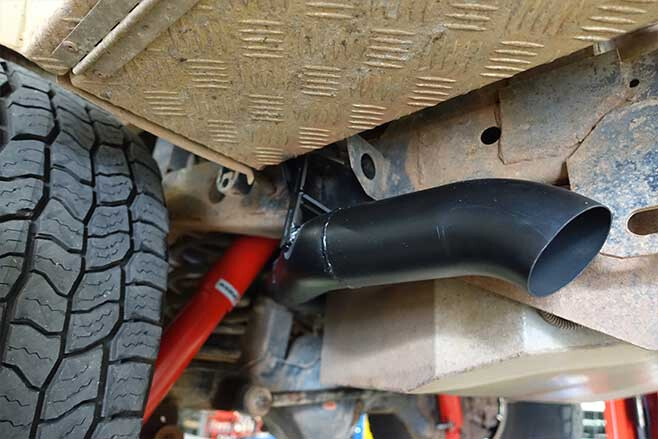
That sort of rounds out the strengthening process on the Patrol, which was started years ago when I stretched the chassis to make the Patrol into a dual cab. Then also strengthening the shock and spring towers.
We are also about to fit a new and larger 1800W full-sine wave Projecta Inverter. You have to run some dedicated wiring for a unit of this size, so we’ll let you know the details in a further update on the ol’ girl.
The Patrol is back on the road and all we’re waiting for is the gates to open here in Victoria and we’ll be out on the tracks. What was going to be a desert trip for the Patrol’s next sojourn looks like it’ll be a High Country tour.
TOTAL KILOMETRES: 435,000km KILOMETRES SINCE LAST UPDATE: 6500km AVERAGE FUEL USE: 15-16L/100km
Update 7: Dirty tricks
Mud and slurry cost us a fortune.
We’ve just returned from a six-month, 20,000km trip that took us across the Simpson and around Central Australia, before returning home for a quick stop and to pick up our camper.
Then we headed to the west coast of SA and through the deserts up along the Beadell Roads to Wiluna, before cutting across the Pilbara to the coast at Ningaloo Station.
From there, we wandered back through the goldfields region of WA before heading to Victoria and fleeing, with the threat of a COVID closure upon us, to Queensland and Cape York. It was a hell of a trip and the ol’ Patrol revelled in its long hauls and dusty delights.
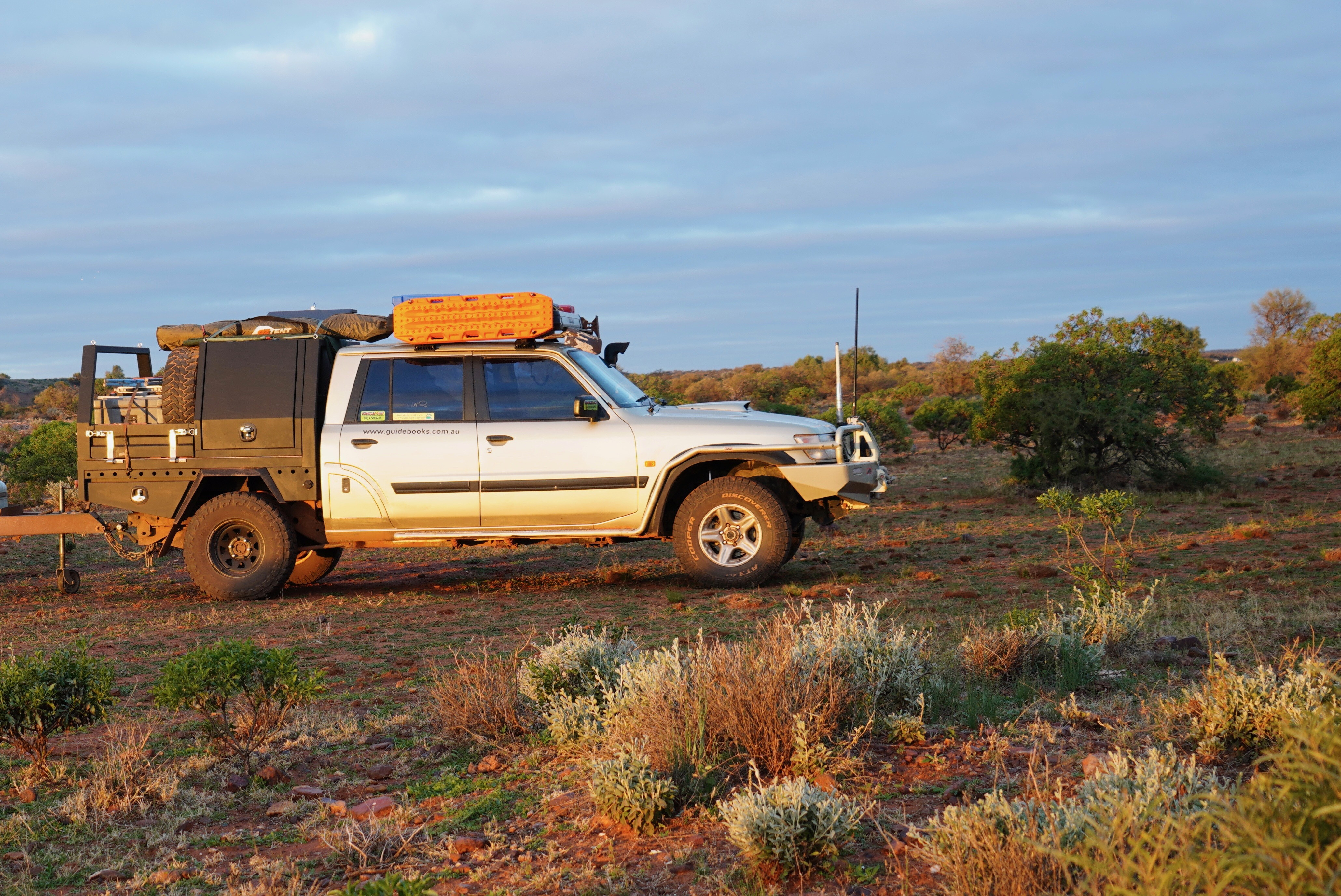
After our trips last year, we decided the Candy Camper canopy was coming off and we replaced it with a new steel frame-cum-alloy tray and fridge box from All4Fabrication.
Based in Pakenham, Victoria, the crew did a great job and built in a 40-litre plastic water tank to the headboard, while under the tray is a full-length slide-out drawer, with under-body boxes gracing each side of the tray. We wired in connections for a fridge, some interior lights and added an exhaust fan, a drop-down fridge slide and a Projecta Pro-Wave 600W inverter.
Before we left, we had the Patrol back at Outback 4WD for a pre-trip inspection and a good service. Discovering a fuel leak from the injector pump, and with a spare injector pump on hand (doesn’t everybody have a spare pump on hand?), we got MTQ Engine Systems in Dandenong to fit and calibrate the overhauled pump along with a set of overhauled injectors. The ol’ girl didn’t know she could run as smooth and as powerful as she now did!
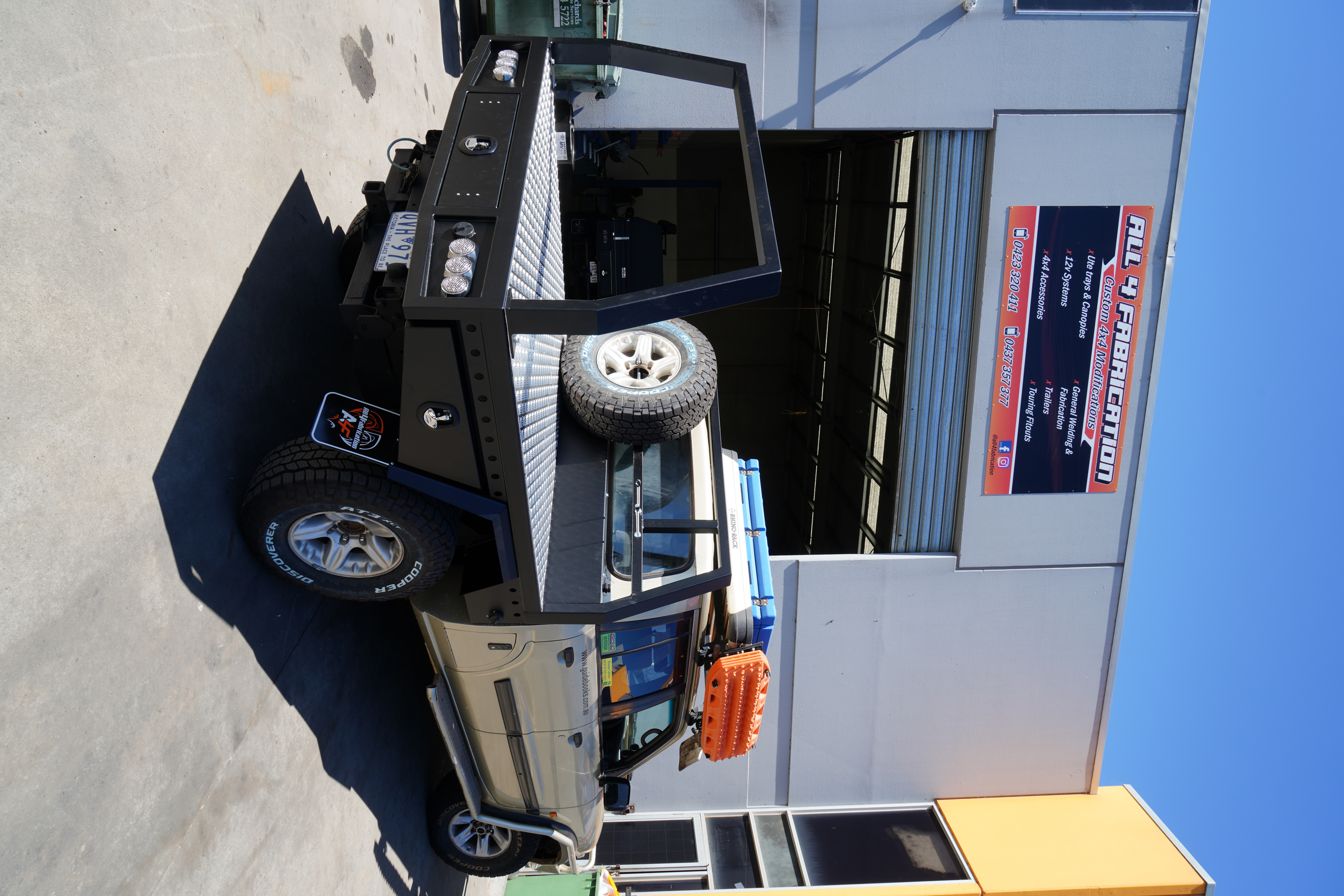
During our Simpson Desert crossing and the ensuing exit from the desert, we got caught in heavy rain and flooded roads, with the abrasive slurry of slushy gravel roads resulting in the chewing-out of the brake pads. That wasn’t all, as we were to find out … it ended up being a very expensive wet drive and another reason I hate driving in mud!
Before we left Alice we gave the Patrol a grease and replaced the front brake pads; but, back in Melbourne, to pick up Viv and our caravan, the crew at Outback 4WD found more brake damage, with the end result being the need to replace all rotors, brake pads (again!) and even the front brake calipers.
Sourcing those new calipers was a trial, as we had changed them much earlier for the bigger, more efficient calipers found on the 4.5-litre petrol GU Patrols. These are pretty rare, as everybody who upgrades the engines and/or performance of diesel Patrols needs those calipers for the modified vehicle to be ‘engineer’ roadworthy. After much searching, Australia-wide, we found a brand-new set at Patrol specialist, Atoc Auto Repairs in the bushy suburb of Belgrave South.
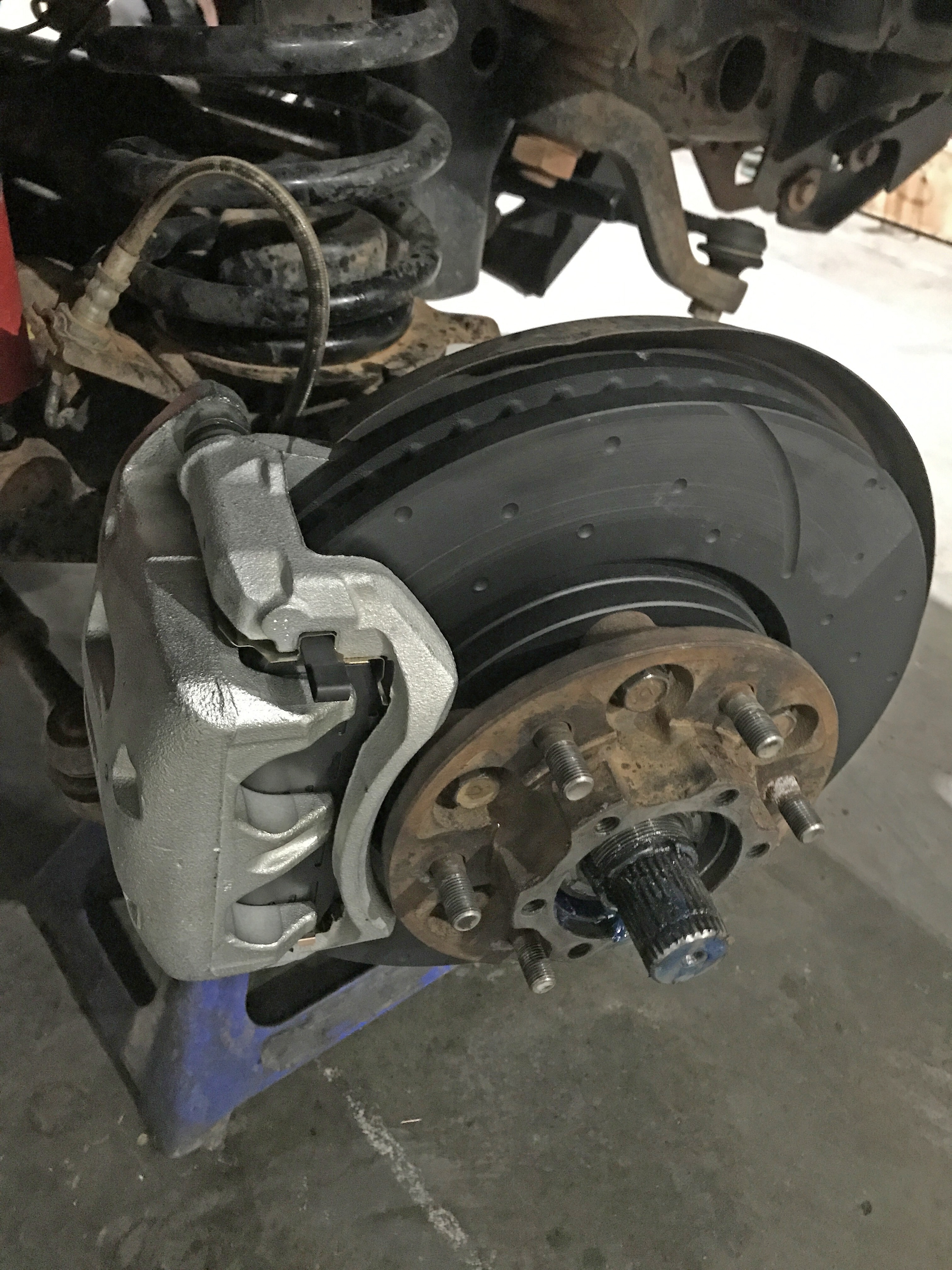
With the brake repairs underway, we also changed the front wheel bearings and then discovered the pinion seal on the rear diff had been chewed out by the slurry we had driven through. We also realised that the pinion flange had been worn. We didn’t muck around and overhauled the rear diff.
While all this was going on, we fitted a Cel-Fi Go 3G/4G reception booster to the Patrol for our Telstra mobile phones. This was fitted by the guys at Cranbourne Car Sound who can supply all your UHF and sat phone needs as well. We’ve used one of these Cel-Fi units before and I was pretty impressed with them, so bit the bullet and fitted one.
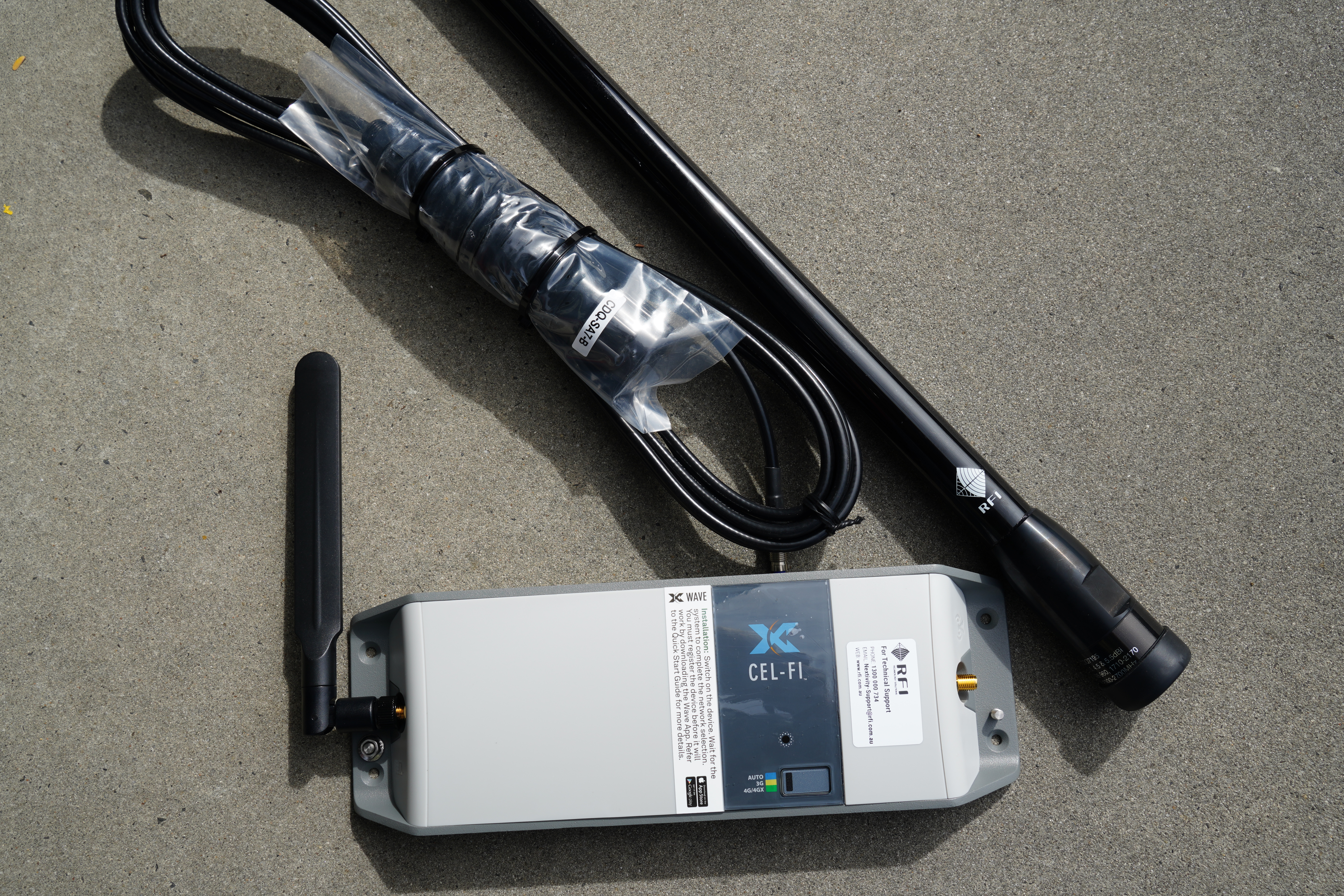
After all that work, our trip to WA and Queensland was pretty much trouble-free. We did in a couple of tyres – two in five minutes, in fact – both with railway spikes as we drove along the rough track near the Trans-Australia Railway line.
It had been an expensive, muddy lesson, topped off with two near-new tyres being staked. I put it all down to the cost of outback adventure!
TOTAL KILOMETRES: 461,000km KILOMETRES SINCE LAST UPDATE: 26,000km AVERAGE FUEL USE: 17-21L/100km

